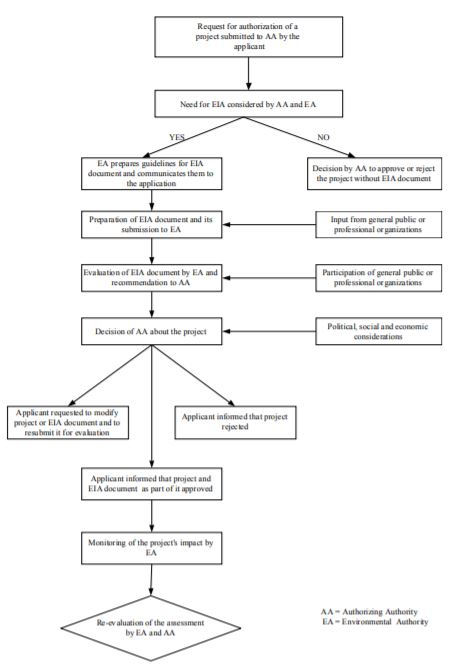An Environmental and Social Impact Assessment (ESIA) is a methodology employed to predict and review potential environmental and social impacts of a proposed project.
First established in the United States in the National Environmental Policy Act of 1969, it is a rather new planning and decision-making tool. It acts as an aid to decision making by proposing ways of evaluating alternatives for appropriate mitigation and monitoring measures to ensure a more equitable and sustainable biophysical and human environment at an early planning stage.
The need for an EIA is usually determined by the scale of the proposed project. It is important to note that assessment is also required for small to medium-sized projects if a great impact is expected on the environment. An ESIA will address the impacts of the exploration, construction and operational phases of the proposed project. Short-, medium- and long-term impacts, local and global impacts, direct, indirect, secondary, cumulative, permanent and temporary, positive and negative effects of the project should be included.
Conducting an ESIA is highly important to any geothermal project. The impacts of a major geothermal energy project are expected to encompass local and global implications for the biophysical and human environments, to name a few. Even though the range of any adverse impacts of the project may be low, the ESIA disseminates information to the public and provides ground for discussion on effects, risks, and mitigation efforts to name a few. Leading up to the execution and publication of the ESIA, there are several procedures which need to take place. ESIAs vary from country to country. This happens because each country bases theirs on their own internal policies, legislature, governance etc. Despite these variations, the steps of preparing any ESIA report to follow a similar outline.
The partnership of a geothermal ESIA is diverse. The range of identities which contribute to the creation of this document encompasses quite literally the total workforce behind the deployment of a geothermal project and by extension, and those impacted (beneficiaries and citizens alike). It is important for all actors in the process to learn from the experiences gained and to improve the ESIA process as it is still relatively new for geothermal projects. Discussion and how to assess the uncertainty involved with these projects and the complicated and diverse scientific data on which the report is based are crucial.
Learn more about the intricacies of ESIAs in future #GeothermaFactsandStats and follow across all major social platforms.
Sources:
https://pdfs.semanticscholar.org/aed9/ca4ef09c43007359c449e12318f42cf3cd43.pdf
https://orkustofnun.is/gogn/unu-gtp-report/UNU-GTP-2003-05.pdf
https://www.geothermal-energy.org/pdf/IGAstandard/WGC/2010/0252.pdf
Author: Elizabeth Bullock
#geothermal #environment #assessment #renewable #policy #humanimpact #enviromental impact



